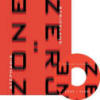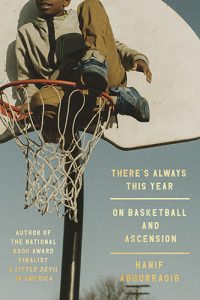Zone : Zero
In contemporary experimental poetry, we a have vast collection of schools: lang po, post-modernists, ultra-modernists, post lang-po writers, etc. Among this large pool of innovation, we find Stephanie Strickland and her fifth book of poetry, Zone : Zero, recently released from Ahsahta Press.
In contemporary experimental poetry, we a have vast collection of schools: lang po, post-modernists, ultra-modernists, post lang-po writers, etc. Among this large pool of innovation, we find Stephanie Strickland and her fifth book of poetry, Zone : Zero, recently released from Ahsahta Press.
In her interview with Strickland for the popular literary blog Bookslut, Kate Greenstreet introduces Strickland as a leader in Hypertext Literature where “more and more poets have become interested in moving their poems off the page and onto the screen where new levels of interaction with the reader/viewer are possible.” This information is not mere miscellany; it is a fundamental way to understand the dense, non-linear logic in Zone : Zero. The book draws on a dizzying array of knowledge: computer language, math logic, the natural world, religious history, the human body, to name a few. Rather than just treating these subjects as mere themes, she actually weaves and synthesizes the language and logic of these disparate arenas into her poems. The result is a collection of fiercely intelligent poems (there are five solid pages of endnotes that discuss various poems’ geneses and influences) that forces the reader to actively participate in constructing meaning. If a reader is willing to slow down and not apply preconceptions on what a poem should or shouldn’t be, then this collection is astoundingly good. On the other hand, if a reader wants a collection that has clear narrative arcs and singular rhetorical tropes, then this is not your book.
The collection is broken into five sections: “Zone ARMORY War,” “Zone MOAT Else,” “Zone DUNGEON Body,” “Zone RAMPART Logic,” and “Zone MOTE Else.” The sectioning of this book is not meant to create narrative in acts. Rather, Strickland explains in her interview with Bookslut, that these sections represent different states of existence, distinct yet only part of an amorphous whole:
It is the sense of living among these fortified zones, you might say, that gives rise to the poems. The War Zone and the (Computational) Logic Zone seem to reign at the moment, and the Body Zone is deeply contested and conflicted. Each of these zones is structured by its own dualities, by history, by language, by archaeology, and their calcification threatens life – or life must be wrested from them…So living among these, or in/between these, is where life happens: sometimes that space gives the sense of a moat, a watery path that slides and tumbles; and sometimes a mote, a rarely seen smallness in the air that dances in uncharted spaces. Our old views of time and space don’t serve well to locate this moment from which life can begin again.
The last sentence is the most striking and most damning of the more traditionally narrative-driven, overtly rhetorical work popularized in the last few decades. Strickland’s work does not lead the reader toward a singular conclusion derived out of anecdotal experience; her work is about exploring the possibilities and limitations of perception itself, such as in the poem “20/21 Vision”:
See
no king. We are turning our attention
to the slim
man, his tattooed hair, alloyed skin. Pierced
with sensors, milked, his garb
a sheath of wireless wires twining
his body like snakes that feed at
the flashing towers, he is
rippling inside
his aura of amperes
idling, on,
almost gone –
booting
up
To be completely frank, I can not summarize what this passage “means”. Rather, I am forced to examine the images, sonic patterns, and stanzaics, and begin to piece together their effects. In this case, instead of a king – a dominant figure, a reigning intellect – there is strange melding of the human world and a synthetic one, ultimately culminating in a computer-generated overload. The energy of the poem – the constant run-ons, the accruement of images – conveys urgency. Moreover, the center-justified stanzas give the poem a tactile presence; the poem is as much physical object as intellectual abstraction. The overall effect appears ostensibly basic: the meaning of the poem lies in its formal construction. Yet, unlike a good deal of more conventional poetry where there is an established language for discussing the poet’s technical and artistic proficiency, Strickland’s poetry creates its own aesthetic terms. To ask if the poems are “well-written” is beside the point: she forces the reader to apprehend how the language is functioning and re-imagine what constitutes poetic logic.
Moreover, the entire genre of electronic poetry re-invents the basic act of reading. Accompanying the book is a CD containing hypertext versions of two longer poems in the manuscript, “The Ballad of Sand and Harry Soot” and “slippingglimpse.” Reading these poems in the context of book – with an implied progression (start on page one, continue linearly to end) – versus reading them on screen with accompanying images and links are wildly different experiences. For instance, “The Ballad” is a long sequenced poem that is told by two different characters, the aforementioned Sand and Soot. It is, at its heart, a love poem, albeit a highly unconventional one. These characters are people; they are elements of the natural world; they are the two basic components of binary code, as the sectioning of each poem broken up as 0 and 1 indicates. Yet, the poems are anything but mechanical:
0
Hold me down, Sand prays, to dusk &
musk, purple black sheathed with frost,
the Concord grape of Krishna’s shoes
with golden tips and toes
and soles. The stars are variable rays,
golden geometric rays
of twisted silk. Crimson lining unfolding.
Achtung! Loose lips. Beware.
1
Here comes Soot.
On the page, this poem’s pleasure is its prosodic adeptness – creating complicated sonic patterning and rhyming – and its intellectual span from a sexualized natural world to the religious garb of Krishna to stars seen in mathematical/
geometric terms. In short, Strickland’s music orders her intellect.
However, if the reader is inclined to upload the CD, a whole new experience unfolds. To call it reading is not accurate. This same poem is laid out against black background, multi-colored text is used, and an image of a large boulder inside an intricate sand garden is in the right upper screen. On the bottom of the page is a string of zeroes, each leading to a section of “The Ballad.” Click on the zeroes from right to left, the reader gets the poem ordered as it is in the book, albeit with an accompanying image. However, if the viewer/reader clicks on the image, he is led to an entirely different section of the poem. Click on the word “Achtung,” the viewer is led somewhere else. This has enormous implications. The poem is not solely a written or vocal act. Rather, it is one firmly entrenched in the contemporary world of digital media – a media that relies on the physical, active participation of the viewer. In this way, the author does not dictate meaning. Rather, meaning is negotiated between artist and audience.
In a strange way, this relatively new kind of poetry is a subversive act, but one that feels more subversive of the academy as opposed to society in general. After all, most citizens of first world nations participate in digital media and hypertext culture every day. Most of these people may not fully understand the technology’s intricacies or its philosophical implications, but most citizens participate in the technology nonetheless. In one way, Strickland’s aesthetic is so esoteric and specialized that it puts her on the fringes of American poetry, let alone American society. On the other hand, Strickland’s poetry utilizes the stuff of the contemporary world, and in this regard, is more populist than many of our current “traditionalists.”




